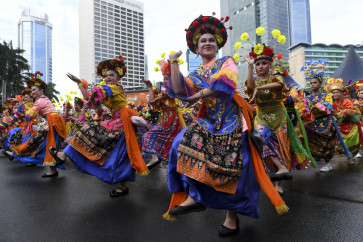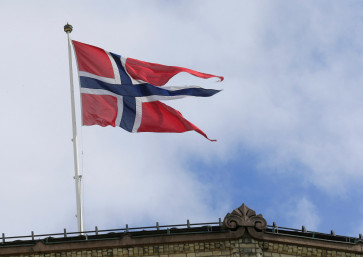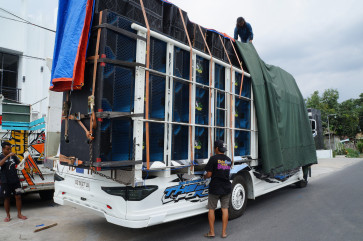Popular Reads
Top Results
Can't find what you're looking for?
View all search resultsPopular Reads
Top Results
Can't find what you're looking for?
View all search resultsEnergy subsidies: A deception?
Government expenditures in 2012 will again be led by energy subsidies
Change text size
Gift Premium Articles
to Anyone
G
overnment expenditures in 2012 will again be led by energy subsidies. Spending on subsidies will top Rp 168.6 trillion (US$19.16 billion), accounting for 17.6 percent of every government dollar spent.
The amount is 1.8 times higher than the funding allocated for education; six times higher than funding for housing and community amenities, including water; 11.5 times higher than funding for healthcare and 32 times more than social protection spending, covering the protection of people with disabilities, seniors, children and women.
I cannot help but wonder whether this is the budget that the Indonesian people want? Are we sure that we want to give up those basic services for cheap fuel?
The majority of Indonesia’s 2012 energy subsidy, Rp 123.6 trillion, is earmarked for fuel, including premium, diesel fuel, kerosene and 3-kilogram canister liquefied petroleum gas (LPG). Through its funding of energy subsidies, the government has promised to support the country’s economy with 40 million kiloliters of subsidized fuel throughout 2012.
Back in September 2009, G20 member states agreed to “rationalize and phase out over the medium term inefficient fossil fuel subsidies that encourage wasteful consumption”.
As a member of the G20, the Indonesian government is claiming to have made some moves to meet the country’s commitment to control fuel subsidies. It stated that it would cut subsidized fuels by 3 to 4 million kiloliters in 2012. Other related programs, such as the limitation of subsidized fuel for private cars and stricter distribution controls were also to be put in place.
A quick glimpse at the figures indicates the seriousness of the government’s efforts to control fuel subsidies. The same figures hide the possibility of incidental budget revisions, as well as other potential risks, than can emerge throughout the year.
Since the allocation of large parts of the state budget to fuel subsidies has been the norm for many years, the government has committed to a gradual approach to fossil fuel subsidy reform.
Aside from setting a fuel subsidy quota of 40 million kiloliters, the government is also planning to limit subsidized fuels for private cars, which represent about 60 percent of subsidized fuel consumption, to save 3.7 million kiloliters of subsidized fuel.
Unfortunately, a gradual approach may not reflect the reality on the ground. For instance, the Indonesian Automotive Industry Association (GAIKINDO) recently stated that 745,000 cars were made in Indonesia in the 12-month period ending in October.
While 65 percent of new cars sold in this period will be targets of subsidized fuel limitation program, an additional 192,000 pick-ups and trucks are not covered under the scheme.
To make matters worse, the sales of motorcycles, which are still eligible for subsidized fuel, are expected to exceed car sales by a factor of ten. Should this assumption hold true, motorcycles are likely to fill the subsidized fuel consumption gap left by private cars, and, thus, perpetuate the existing energy subsidy problem facing the country.
Without taking into this into account, it is likely that the government’s current plan to promote fossil fuel subsidy reform is doomed to fail. The relative success of price controls and volume quota policies rests mainly on the ability of the government to control the distribution and consumption of fossil fuels.
Although the problem related to subsidized fuels distribution and consumption is not new, it remains a key challenge in the implementation of the government’s policies. Between January and August, for example, the BPH Migas, the Indonesian downstream oil and gas regulator, found more than 160 illegal activities related to the distribution and consumption of subsidized fuels.
In a number of public events, representatives from BPH Migas have said that such illegal activities were possible due to the disparity between the price of subsidized fuels and the market price.
While few studies have been conducted to assess the causal relationship between price disparity and illegal distribution and consumption of subsidized fuels, the 2007 kerosene-to-LPG conversion policy, as well as the policy to remove the subsidy for kerosene, helped reduce the traditional illegal fuel mixing business, widely known as ngoplos.
In the absence of other alternative measures, the government can only rely on the legal enforcement to help monitor the distribution process of subsidized fuels, as well as voluntary obedience of distributors and private car owners to respect the existing regulation on the distribution and consumption of subsidized fuels.
Although the government’s existing strategy to reduce fuel subsidies through limiting the access of private car owners to subsidized fuels and stricter distribution control could quickly fill the gap in addressing fuel subsidies problem in the country, it should also consider of pursuing different approaches to fossil fuel subsidy reform, such as letting the price of fuels to rise gradually for everyone, whilst targeting social assistance to the poor and rural parts of population that will be hardest hit by high prices.
The writer is a research associate at the Global Subsidies Initiative (GSI), a program of the International Institute for Sustainable Development (IISD). The opinions expressed here are his own.










